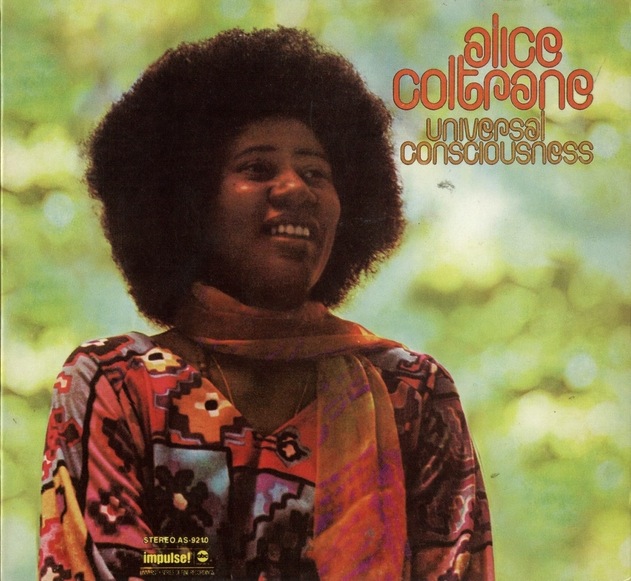
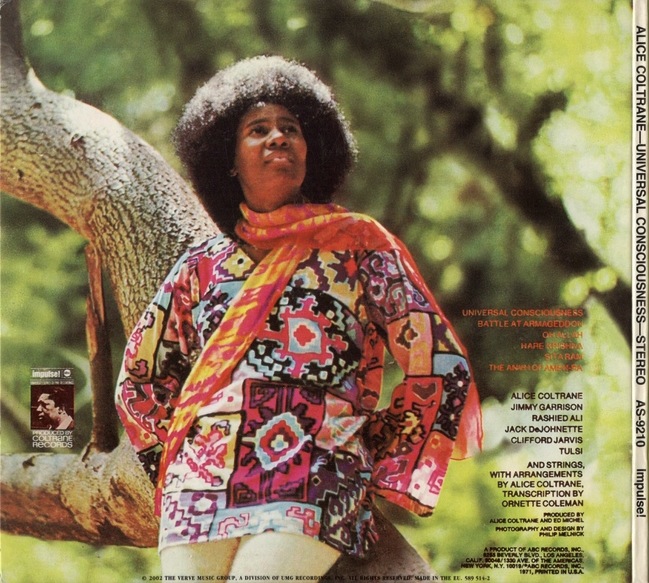
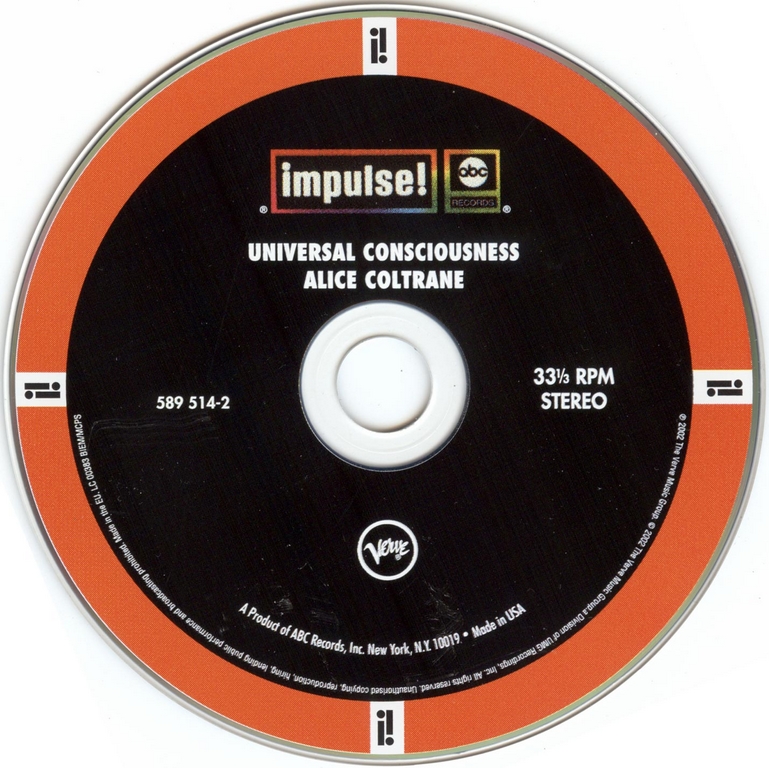
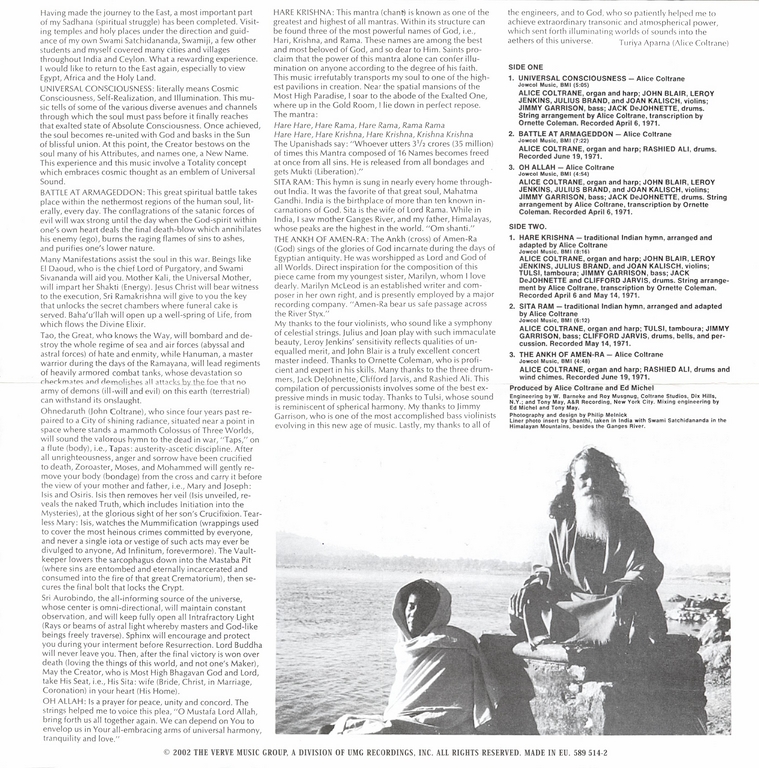
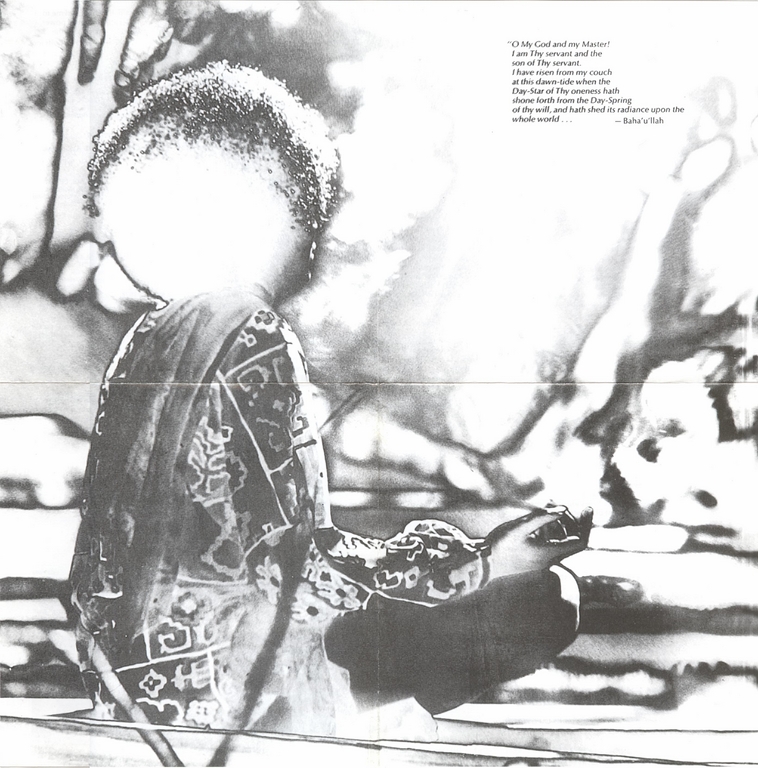

Alice Coltrane – Universal Consciousness (1971) [FLAC]{24-bit remaster 2002}
Track Listing
1 Universal Consciousness 5:02
2 Battle At Armageddon 7:19
3 Oh Allah 4:53
4 Hare Krishna 8:14
5 Sita Ram 4:45
6 The Ankh Of Amen-Ra 6:10
Credits
Bass Jimmy Garrison (tracks: 1, 3 to 5)
Drums Jack DeJohnette (tracks: 1, 3, 4)
Engineer Roy Musgnug, Tony May, W. Barneke*
Engineer [Mixing Engineering By] Ed Michel, Tony May
Harp, Organ Alice Coltrane
Liner Notes Turiya Aparna
Photography [Liner Photo Insert By] Shanthi
Photography By, Design Philip Melnick
Producer Ed Michel
Producer [Original Recordings] Alice Coltrane, Ed Michel
Violin Joan Kalisch (tracks: 1, 3, 4), John Blair (tracks: 1, 3, 4), Julius Brand (tracks: 1, 3, 4), Leroy Jenkins (tracks: 1, 3, 4)
Written-By Alice Coltrane (tracks: 1 to 3, 6), Traditional (tracks: 4, 5)
Notes:
Recorded April-June 1971 at A&R Recording, New York City, and/or the Coltrane home studio, Dix Hills, New York: tracks 1 and 3 on April 6; track 4 on April 6 and May 14; track 5 on May 14; tracks 2 and 6 on June 19.
Tracks 4 and 5: Traditional Indian hymn.
Liner photo insert by Shanthi, taken in India with Swami Satchidananda in the Himalayan Mountains, besides the Ganges River.
http://www.discogs.com/Alice-Coltrane-Universal-Consciousness/release/505638
Biography (by Chris Kelsey – AMG)
Alice Coltrane was an uncompromising pianist, composer and bandleader, who spent the majority of her life seeking spiritually in both music and her private life. Music ran in Alice Coltrane’s family; her older brother was bassist Ernie Farrow, who in the ’50s and ’60s played in the bands of Barry Harris, Stan Getz, Terry Gibbs, and especially Yusef Lateef. Alice McLeod began studying classical music at the age of seven. She attended Detroit’s Cass Technical High School with pianist Hugh Lawson and drummer Earl Williams. As a young woman she played in church and was a fine bebop pianist in the bands of such local musicians as Lateef and Kenny Burrell. McLeod traveled to Paris in 1959 to study with Bud Powell. She met John Coltrane while touring and recording with Gibbs around 1962-1963; she married the saxophonist in 1965, and joined his band — replacing McCoy Tyner — one year later. Alice stayed with John’s band until his death in 1967; on his albums Live at the Village Vanguard Again! and Concert in Japan, her playing is characterized by rhythmically ambiguous arpeggios and a pulsing thickness of texture.
Subsequently, she formed her own bands with players such as Pharoah Sanders, Joe Henderson, Frank Lowe, Carlos Ward, Rashied Ali, Archie Shepp, and Jimmy Garrison. In addition to the piano, Alice also played harp and Wurlitzer organ. She led a series of groups and recorded fairly often for Impulse, including the celebrated albums Monastic Trio, Journey in Satchidananda, Universal Consciousness, and World Galaxy. She then moved to Warner Brothers, where she released albums such as Transcendence, Eternity, and her double live opus Transfiguration in 1978.
Long concerned with spiritual matters, Coltrane founded a center for Eastern spiritual study called the Vedanta Center in 1975. Also, she began a long hiatus from public or recorded performance, though her 1981 appearance on Marian McPartland’s Piano Jazz radio series was released by Jazz Alliance. In 1987, she led a quartet that included her sons Ravi and Oran in a John Coltrane tribute concert at the Cathedral of St. John the Divine in New York City. Coltrane returned to public performance in 1998 at a Town Hall Concert with Ravi and again at Joe’s Pub in Manhattan in 2002.
She began recording again in 2000 and eventually issued the stellar Translinear Light on the Verve label in 2004. Produced by Ravi, it featured Coltrane on piano, organ, and synthesizer, in a host of playing situations with luminary collaborators that included not only her sons, but also Charlie Haden, Jack DeJohnette, Jeff “Tain” Watts, and James Genus. After the release of Translinear Light, she began playing live more frequently, including a date in Paris shortly after Hurricane Katrina in 2005, and a brief tour in fall 2006 with Ravi. Coltrane died on January 12, 2007, of respiratory failure at Los Angeles’ West Hills Hospital and Medical Center.
Album Review (by Thom Jurek – AMG)
Recorded between April and June of 1971, Alice Coltrane’s Universal Consciousness stands as her classic work. As a testament to the articulation of her spiritual principles, Universal Consciousness stands even above World Galaxy as a recording where the medium of music, both composed and improvised, perfectly united the realms of body (in performance), speech (in the utterance of individual instrumentalists and group interplay), and mind (absolute focus) for the listener to take into her or his own experience. While many regard Universal Consciousness as a “jazz” album, it transcends even free jazz by its reliance on deeply thematic harmonic material and the closely controlled sonic dynamics in its richly hued chromatic palette. The set opens with the title track, where strings engage large washes of Coltrane’s harp as Jack DeJohnette’s drums careen in a spirit dance around the outer edge of the maelstrom. On first listen, the string section and the harp are in counter-dictum, moving against each other in a modal cascade of sounds, but this soon proves erroneous as Coltrane’s harp actually embellishes the timbral glissandos pouring forth. Likewise, Jimmy Garrison’s bass seeks to ground the proceedings to DeJohnette’s singing rhythms, and finally Coltrane moves the entire engagement to another dimension with her organ. Leroy Jenkins’ violin and Garrison’s bottom two strings entwine one another in Ornette Coleman’s transcription as Coltrane and the other strings offer a middling bridge for exploration. It’s breathtaking. On “Battle at Armageddon,” the violence depicted is internal; contrapuntal rhythmic impulses whirl around each other as Coltrane’s organ and harp go head to head with Rashied Ali’s drums. “Oh Allah” rounds out side one with a gorgeously droning, awe-inspiring modal approach to whole-tone music that enfolds itself into the lines of organic polyphony as the strings color each present theme intervalically. DeJohnette’s brushwork lisps the edges and Garrison’s bass underscores each chord and key change in Coltrane’s constant flow of thought.
On side two, “Hare Krishna” is a chant-like piece that is birthed from minor-key ascendancy with a loping string figure transcribed by Coleman from Coltrane’s composition on the organ. She lays deep in the cut, offering large shimmering chords that twirl — eventually — around high-register ostinatos and pedal work. It’s easily the most beautiful and accessible track in the set, in that it sings with a devotion that has at its base the full complement of Coltrane’s compositional palette. “Sita Ram” is a piece that echoes “Hare Krishna” in that it employs Garrison and drummer Clifford Jarvis, but replaces the strings with a tamboura player. Everything here moves very slowly, harp and organ drift into and out of one another like breath, and the rhythm section — informed by the tamboura’s drone — lilts on Coltrane’s every line. As the single-fingered lines engage the rhythm section more fully toward the end of the tune, it feels like a soloist improvising over a chanting choir. Finally, the album ends with another duet between Ali and Coltrane. Ali uses wind chimes as well as his trap kit, and what transpires between the two is an organically erected modal architecture, where texture and timbre offer the faces of varying intervals: Dynamic, improvisational logic and tonal exploration become elemental figures in an intimate yet universal conversation that has the search itself and the uncertain nature of arrival, either musically or spiritually, at its root. This ambiguity is the only way a recording like this could possibly end, with spiritual questioning and yearning in such a musically sophisticated and unpretentious way. The answers to those questions can perhaps be found in the heart of the music itself, but more than likely they can, just as they are articulated here, only be found in the recesses of the human heart. This is art of the highest order, conceived by a brilliant mind, poetically presented in exquisite collaboration by divinely inspired musicians and humbly offered as a gift to listeners. It is a true masterpiece. The CD reissue by Universal comes with a handsome Japanese-style five-by-five-inch paper sleeve with liner notes reprinted inside and devastatingly gorgeous 24-bit remastering.
Personal Notes
Masterpiece recording, it really doesn’t need any introduction. Essential for any serious jazz lover. New remastering sounds pretty nice indeed!
